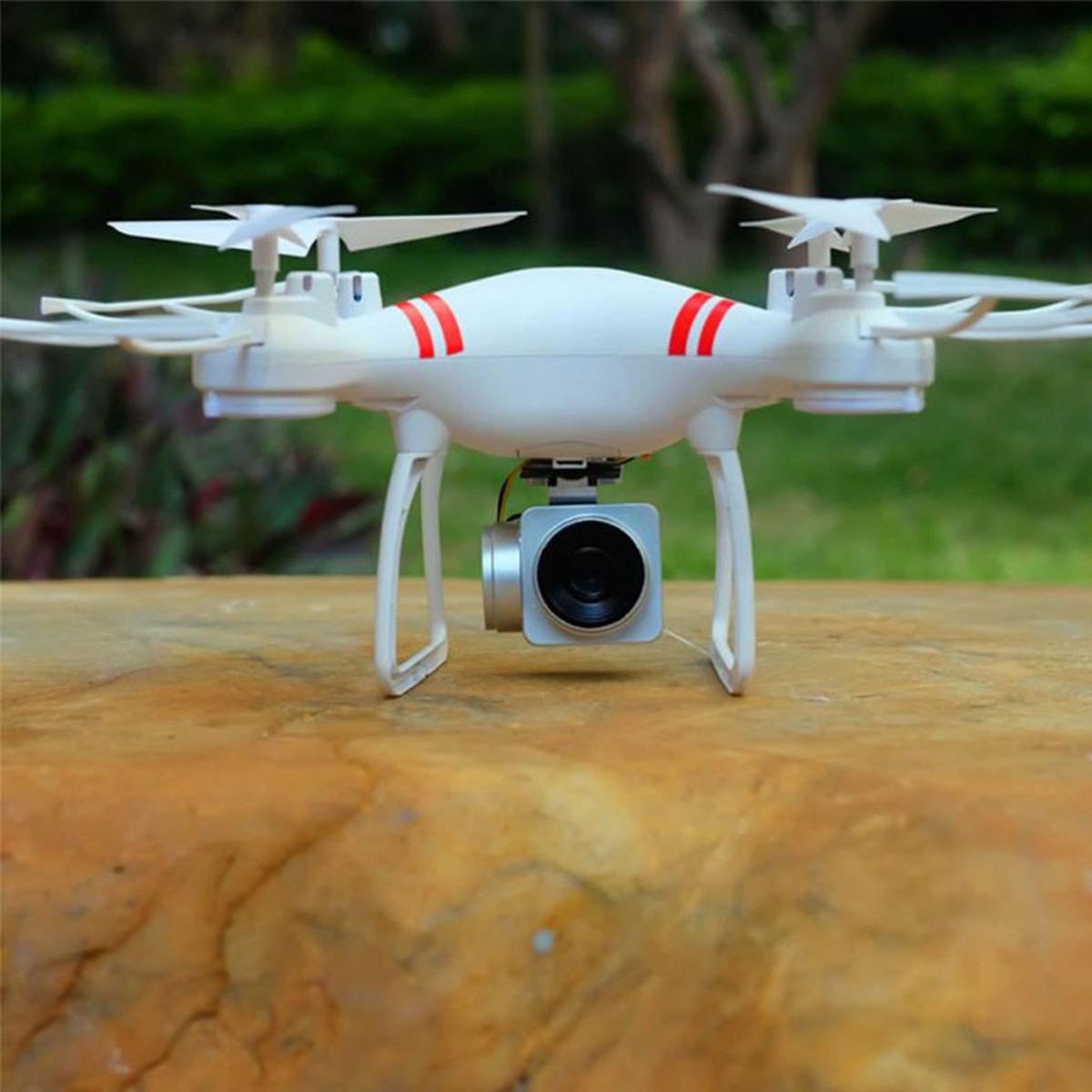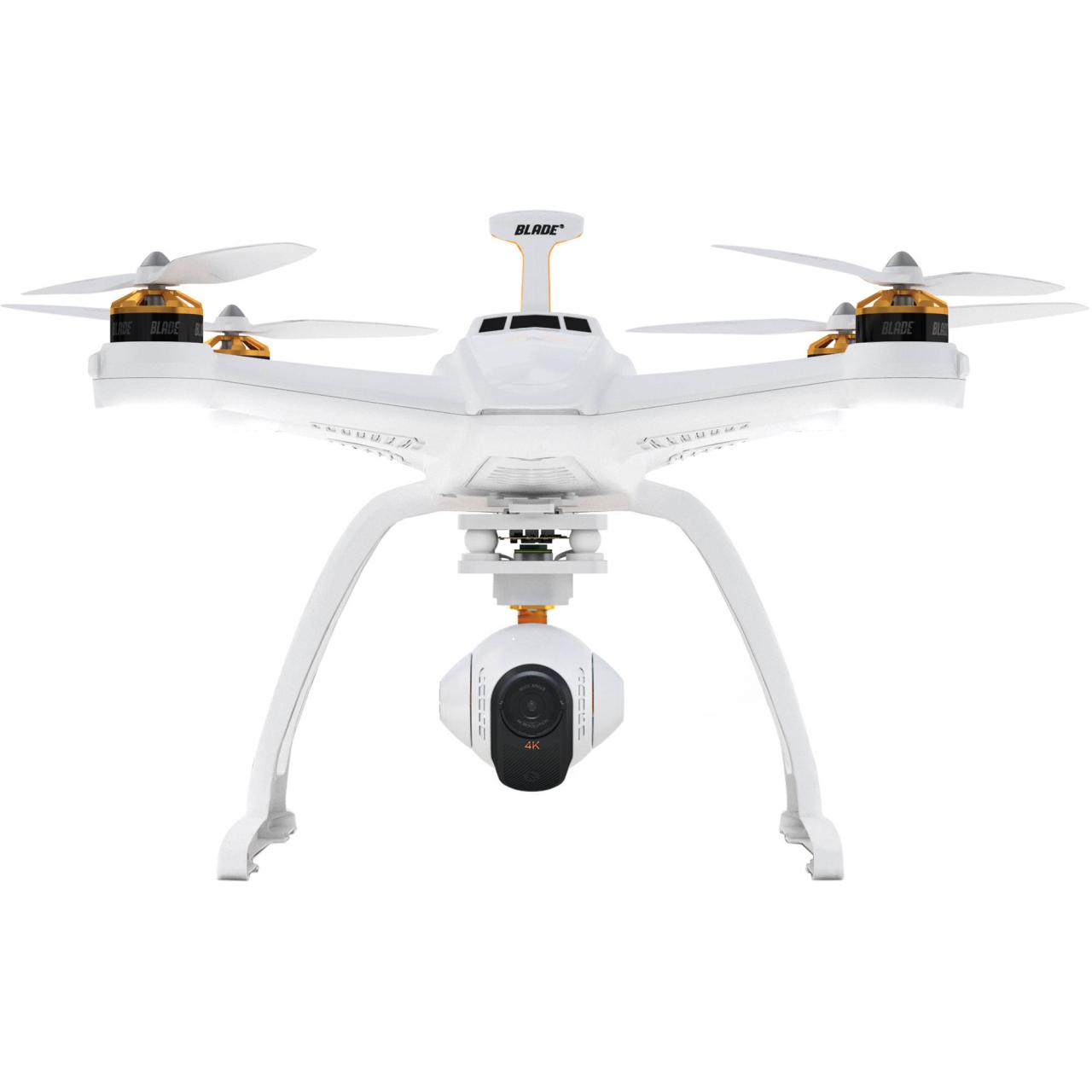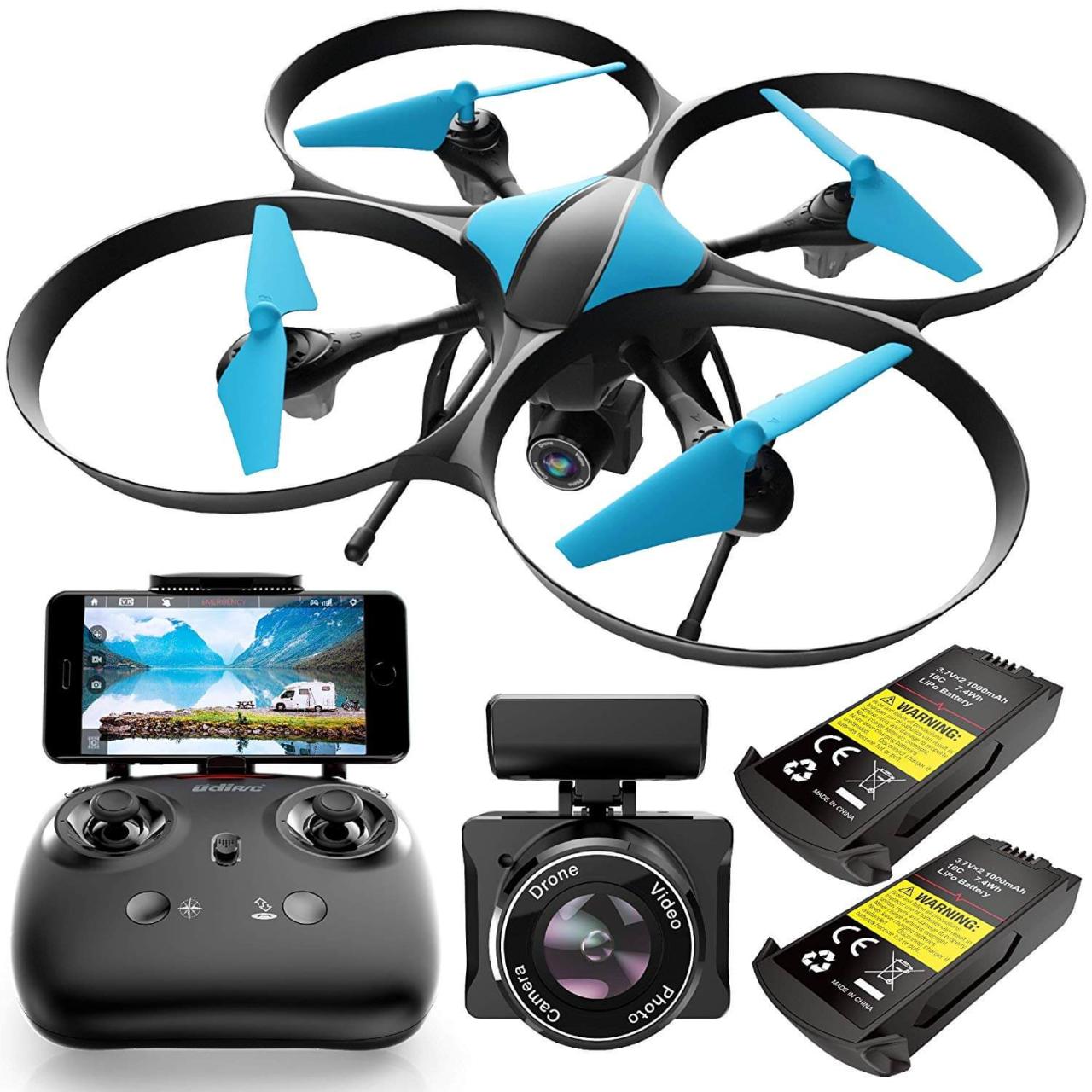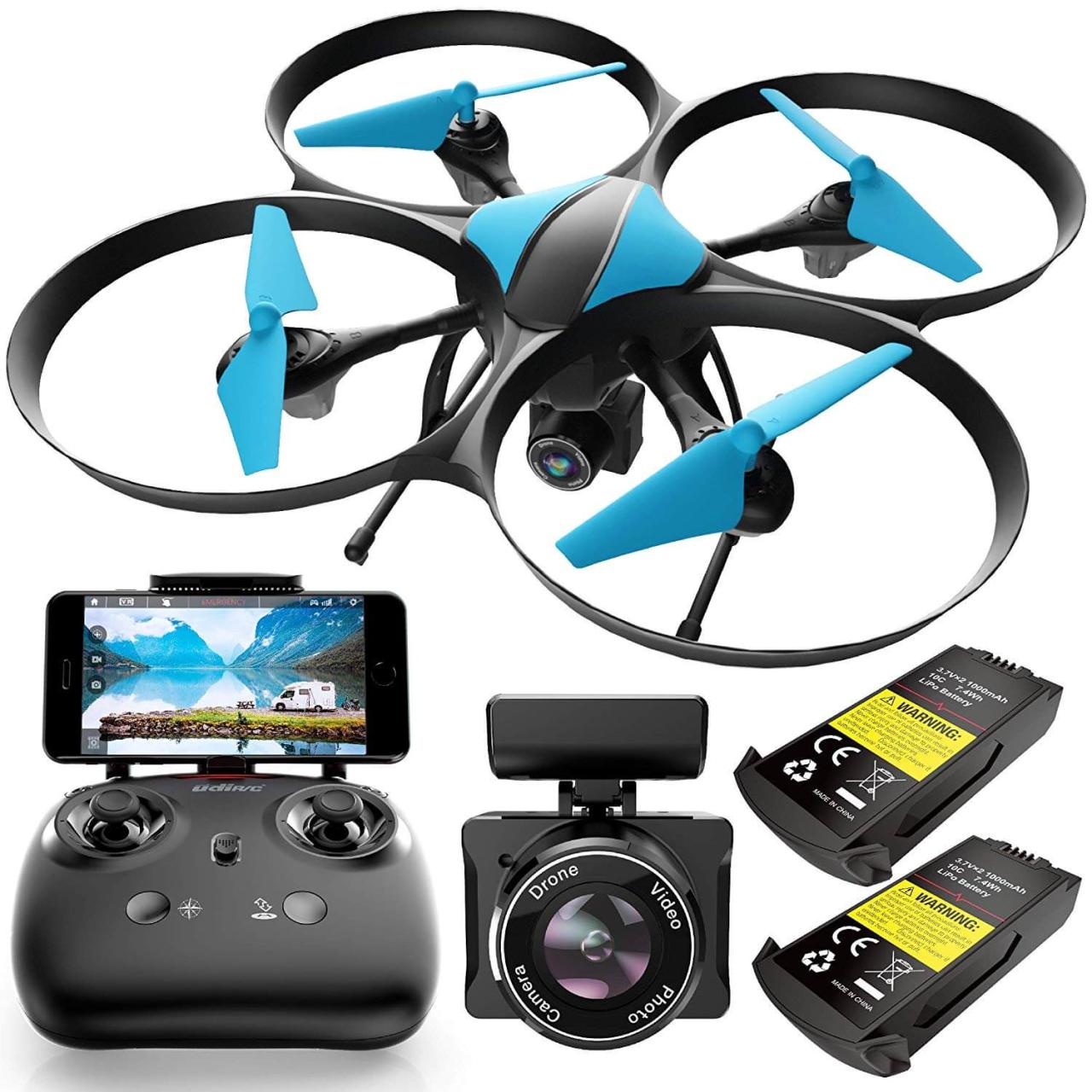Drone with camera technology has revolutionized aerial photography and videography, offering unprecedented perspectives and capabilities. From capturing breathtaking landscapes to conducting detailed inspections, drones equipped with cameras are transforming various industries. This guide explores the diverse types of drones available, their camera technologies, flight techniques, legal considerations, and diverse applications. We’ll delve into the intricacies of image capture, post-processing, and the ethical implications of this powerful technology.
We’ll examine different drone sizes, from compact nano-drones ideal for indoor use to larger models suitable for extensive aerial surveys. The various camera features, including GPS stabilization, obstacle avoidance, and intelligent flight modes, will be discussed in detail. Furthermore, we’ll cover the legal frameworks surrounding drone operation and the ethical considerations related to privacy and responsible use.
Types of Drones with Cameras
The market offers a diverse range of drones equipped with cameras, catering to various needs and skill levels. Understanding the differences in size, features, and intended use is crucial for selecting the right drone.
Drone Categorization Based on Size, Features, and Use
| Type | Size | Features | Use Case |
|---|---|---|---|
| Nano Drone | Extremely compact, palm-sized | Basic camera, often lacks GPS or obstacle avoidance | Recreational flying, indoor photography |
| Micro Drone | Small and lightweight, easily portable | Improved camera quality, may include GPS | Recreational flying, aerial photography |
| Mini Drone | Slightly larger than micro drones, more robust | GPS, obstacle avoidance, possibly follow-me mode | Photography, videography, recreational use |
| Standard Drone | Larger size, more powerful motors | Advanced features: GPS, obstacle avoidance, follow-me, intelligent flight modes | Professional photography, videography, mapping, inspection |
| Large Drone | Significant size and weight, requires specific permits | High-end camera systems, long flight times, heavy payload capacity | Commercial applications: surveying, agriculture, cinematography |
Advantages and Disadvantages of Drone Types
Each drone type presents a unique balance of advantages and disadvantages. Nano drones are highly portable but lack advanced features, while large drones offer superior capabilities but come with increased complexity and regulatory hurdles.
- Nano Drones: Advantages – portability, affordability; Disadvantages – limited flight time, basic features.
- Micro Drones: Advantages – balance of portability and features; Disadvantages – shorter flight times compared to larger models.
- Mini Drones: Advantages – improved features, better stability; Disadvantages – less portability than nano/micro drones.
- Standard Drones: Advantages – versatile, feature-rich; Disadvantages – higher cost, requires more skill to operate.
- Large Drones: Advantages – high payload capacity, long flight times, powerful cameras; Disadvantages – expensive, complex operation, stringent regulations.
Key Specifications of Selected Drones

Here are the specifications for three example drones from different categories, illustrating the range of capabilities available:
- Example Nano Drone: (Hypothetical) 720p camera, 1/4″ CMOS sensor, fixed-focus lens.
- Example Mini Drone: (Hypothetical) 1080p camera, 1/2.3″ CMOS sensor, wide-angle lens with adjustable aperture.
- Example Standard Drone: (Hypothetical) 4K camera, 1″ CMOS sensor, interchangeable lens system (wide-angle, telephoto options).
Camera Technology in Drones
The quality of aerial photography and videography is heavily influenced by the camera technology employed in the drone. Understanding sensor types and resolution is essential for making informed decisions.
Drone Camera Sensor Types
CMOS (Complementary Metal-Oxide-Semiconductor) and CCD (Charge-Coupled Device) are the primary sensor types used in drone cameras. CMOS sensors are now more prevalent due to their lower power consumption and cost-effectiveness, while CCD sensors generally offer higher image quality but are less energy-efficient.
Image Quality and Resolution, Drone with camera
Camera resolution significantly impacts image quality. Higher resolutions (4K, 1080p) capture more detail, allowing for larger prints and better cropping, but require more storage space and processing power. 720p provides a decent image quality but is less suitable for professional applications.
- 4K: Highest resolution, ideal for professional work and large prints.
- 1080p: Excellent resolution for most applications, good balance between quality and file size.
- 720p: Lower resolution, suitable for casual use and smaller displays.
Drone Camera Lens Types
Various lens types cater to different photographic needs. The choice of lens directly affects the field of view and perspective of the captured images and videos.
- Wide-angle Lens: (Typical focal length: 14-24mm) Captures a broad field of view, ideal for landscapes and establishing shots.
- Telephoto Lens: (Typical focal length: 70mm and above) Magnifies distant subjects, useful for wildlife photography or capturing details from afar.
- Zoom Lens: (Variable focal length) Offers flexibility to switch between wide and telephoto perspectives without changing lenses.
Drone Flight and Image Capture Techniques: Drone With Camera
Achieving stable, high-quality aerial shots requires mastering various flight and camera techniques. Careful planning and execution are crucial for optimal results.
Stable Aerial Shots Using Flight Modes
Different flight modes offer enhanced stability and control, enabling smoother shots. Tripod mode simulates a stationary camera, while cine mode prioritizes smooth movements, ideal for cinematic shots.
Best Practices for High-Quality Image and Video Capture

Factors like lighting, composition, and camera settings significantly influence the quality of the final product. Proper exposure, balanced white balance, and careful framing are essential for professional-looking results.
- Lighting: Shoot during the “golden hour” (sunrise and sunset) for soft, warm light.
- Composition: Utilize the rule of thirds, leading lines, and other compositional techniques.
- Camera Settings: Adjust ISO, shutter speed, and aperture to achieve optimal exposure and depth of field.
Planning a Drone Flight

Thorough planning is crucial for a successful drone flight. Pre-flight checks ensure the drone’s safety and functionality, while considering safety regulations prevents accidents and legal issues.
Drones equipped with cameras offer a unique perspective, capturing breathtaking aerial footage. For a real-time example of this technology’s potential, consider checking out the live feed from the port dover live camera , which showcases a similar vantage point, albeit without the maneuverability of a drone. The high-definition images provide a compelling comparison to what drone operators can achieve, highlighting the versatility and benefits of using drones with cameras for various applications.
- Check weather conditions and wind speed.
- Inspect the drone for any damage or malfunctions.
- Plan the flight path and ensure it’s within legal limits.
- Check battery levels and ensure sufficient power for the flight.
- Verify the flight area is safe and free from obstacles.
- Obtain necessary permissions or licenses if required.
Legal and Ethical Considerations
Operating drones with cameras involves legal and ethical responsibilities. Understanding and adhering to regulations and ethical guidelines is crucial for responsible drone operation.
Legal Regulations and Restrictions
Regulations vary depending on location. Urban areas often have restricted airspace, while national parks may have specific permits required. Private property requires permission from the owner before flying a drone.
Ethical Implications of Drone Usage
Privacy concerns are paramount when using drones with cameras. It is crucial to respect individuals’ privacy and avoid unauthorized surveillance. Transparency and responsible data handling are key ethical considerations.
Ethical Scenario: Drone Flight and Ethical Considerations
Imagine a drone operator capturing footage of a private event without permission. The ethical dilemma arises from the violation of privacy and potential misuse of the captured footage. The operator should have sought permission beforehand and respected the individuals’ right to privacy.
Applications of Drones with Cameras
Drones with cameras are revolutionizing various industries, offering efficient and innovative solutions. Their applications span across diverse sectors, significantly impacting productivity and data acquisition.
Drone Applications Across Industries
| Industry | Application | Drone Type | Benefits |
|---|---|---|---|
| Agriculture | Crop monitoring, precision spraying | Standard, Large | Improved crop yields, reduced pesticide use, efficient resource management |
| Construction | Site surveying, progress monitoring, inspection | Standard, Large | Faster project completion, enhanced safety, cost savings |
| Real Estate | Property photography, virtual tours | Mini, Standard | Attractive marketing materials, wider reach to potential buyers |
| Search and Rescue | Aerial surveillance, locating missing persons | Standard, Large | Faster response times, improved search efficiency, enhanced safety for rescuers |
Benefits and Challenges of Drone Use in Industries
While drones offer significant benefits, challenges exist such as regulatory compliance, data security, and the need for skilled operators.
Hypothetical Application: Drone Technology in Wildlife Conservation
Drones equipped with thermal cameras could be used to monitor endangered animal populations, track their movements, and assess their health. This would enable more effective conservation strategies and provide valuable data for research.
Image and Video Processing
Post-processing plays a crucial role in enhancing the quality and visual appeal of drone footage. Various software and techniques are employed to achieve professional-looking results.
Post-Processing Techniques
Techniques such as color grading, stabilization, and noise reduction are used to improve the final product. Color grading enhances mood and atmosphere, stabilization removes unwanted camera shake, and noise reduction minimizes graininess.
Software Options for Editing Drone Footage
Several software options cater to different skill levels and budgets. Adobe Premiere Pro, DaVinci Resolve, and DJI Fly are popular choices, each offering a unique set of features.
The increasing popularity of drones is largely due to their versatile applications, especially those equipped with high-quality cameras. These devices offer stunning aerial photography and videography capabilities, making them invaluable tools for various industries. For those interested in learning more about the diverse range of available options, a great resource is this website: drone with camera.
Ultimately, choosing the right drone with camera depends on individual needs and budget considerations.
Improving the Final Product Through Post-Processing
By skillfully applying post-processing techniques, drone footage can be transformed from raw captures to polished, professional-looking videos and images.
The integration of cameras into drone technology has unlocked a wealth of opportunities across numerous sectors. From improving agricultural practices to enhancing search and rescue operations, drones with cameras are proving invaluable. However, responsible and ethical operation is paramount. Understanding the legal regulations, privacy implications, and best practices for image capture are crucial for harnessing the full potential of this transformative technology while minimizing risks and ensuring its beneficial use for society.
Questions and Answers
What is the best drone with camera for beginners?
Several user-friendly drones are excellent for beginners, often featuring intuitive controls and automatic flight modes. Research models with good reviews and consider factors like battery life and ease of use.
How do I get a drone pilot license?
Licensing requirements vary by location. In many regions, registration is mandatory, and commercial use often requires a specific license or permit. Check your local aviation authority’s website for specific regulations.
What is the flight time of a typical drone with camera?
Flight times vary greatly depending on the drone model, battery size, and environmental conditions. Expect anywhere from 15 to 40 minutes per battery charge, with larger drones generally offering longer flight times.
How do I store drone batteries safely?
Store drone batteries in a cool, dry place away from flammable materials. Always follow the manufacturer’s instructions for charging and storage. Never leave them charging unattended.
